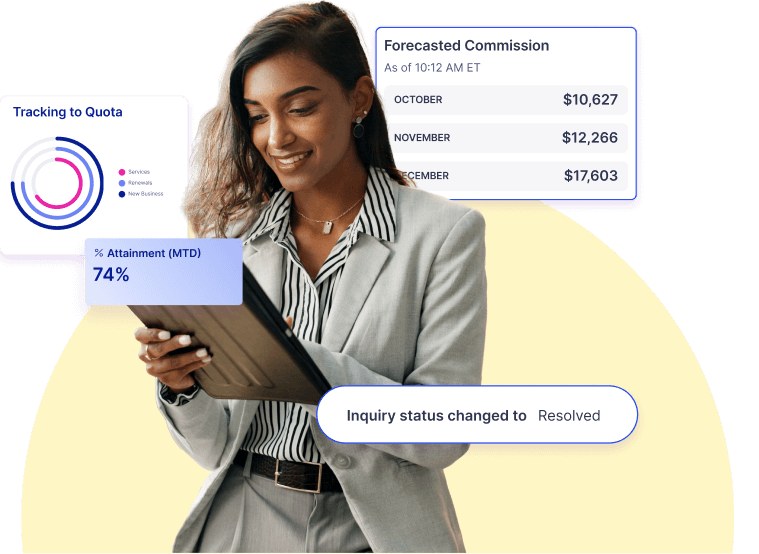Sales Performance Management: The Single Most Powerful
Lever in Revenue
Sales Performance Management (SPM) is, at its core, the discipline of turning high-level sales strategy into execution. It involves orchestrating all the elements that make a sales organization successful: planning territories, setting quotas, optimizing capacity, designing incentives, guiding sellers, adjusting plans as the market shifts, and more.
SPM is the most powerful lever for growth a sales leader can pull, as it makes the sales system itself a source of major competitive advantage.


The Massive Multiplier for Growth
Sales Performance Management doesn’t always get the spotlight. Leaders often focus on product, pipeline, or process. But it’s SPM that usually determines how sellers actually perform.
When it’s working, every part improves: territories reflect real capacity, quotas match ambition and are tied to real opportunity, incentives drive the right behavior, and sellers know exactly how to win. The whole org moves as a single, connected unit.
Most organizations already have these pieces in place. What they’re missing is orchestration. That’s what turns SPM from underestimated lever into massive competitive advantage, built into the way the organization sells.
AI-Native, Connected, Built for Scale
Modern SPM can’t be a patchwork. To work, it has to run as one orchestrated system, designed for constant change and built with intelligence at the core. That’s the philosophy behind our approach:
AI-Native:
Intelligence isn’t bolted on after the fact. It’s built in from the start. Our system doesn’t just make existing workflows incrementally easier; it orchestrates them to produce more revenue.
Connected:
Sales Planning, Incentives, Seller Insights, and the data foundation operate as a single, adaptive system. Territories, quotas, payouts, and insights shift together when scenarios change.
Built for Scale:
Few tools are built to manage the complexity of enterprise sales orgs. Ours handles thousands of sellers, complex global hierarchies, and millions of transactions, without losing clarity or control.
The Payoff
For sellers
The difference is immediate. They know which accounts matter, what their targets mean, and how their work will be rewarded. Instead of questioning the plan, they trust it, since it’s setting them up to win.


For Sales Leaders
The payoffs are multiple. Their sellers can maximize earnings, and back-office issues aren’t holding them back. They can trust that all opportunities are being worked, and that their plans are built to hit the number.
For Rev Ops
The work finally moves from fixing to building. They aren’t stuck patching spreadsheets or reconciling mismatched data. They get clean inputs, understandable outputs, and the bandwidth to improve the model and drive strategic decisions.

Proven by Customers. Recognized by the Industry.
Built for What’s Next.
Varicent has consistently been named a leader in Compensation Management and Sales Performance. Our focus on real orchestration, shapes a GenAI-powered platform that aligns strategy, performance, and execution in one system. With Varicent, Sales, Finance, Compensation, and Operations teams plan smarter, adapt faster, and keep sellers focused on the right opportunities.
Sales Planning
Sales Performance Management
Sales Compensation
See SPM the Way It Was Meant to Be
Most teams treat SPM as overhead. We treat it as the competitive lever for modern GTM.
See how AI-Native SPM from Varicent orchestrates every part of your revenue engine.
Trusted by Leaders Who Own the Number







